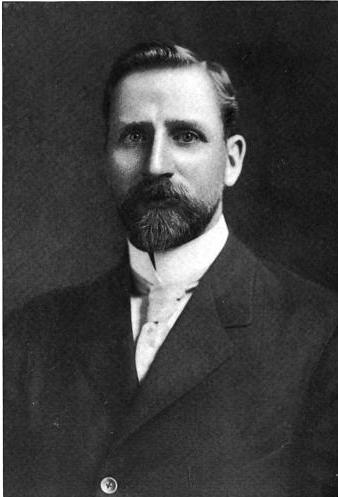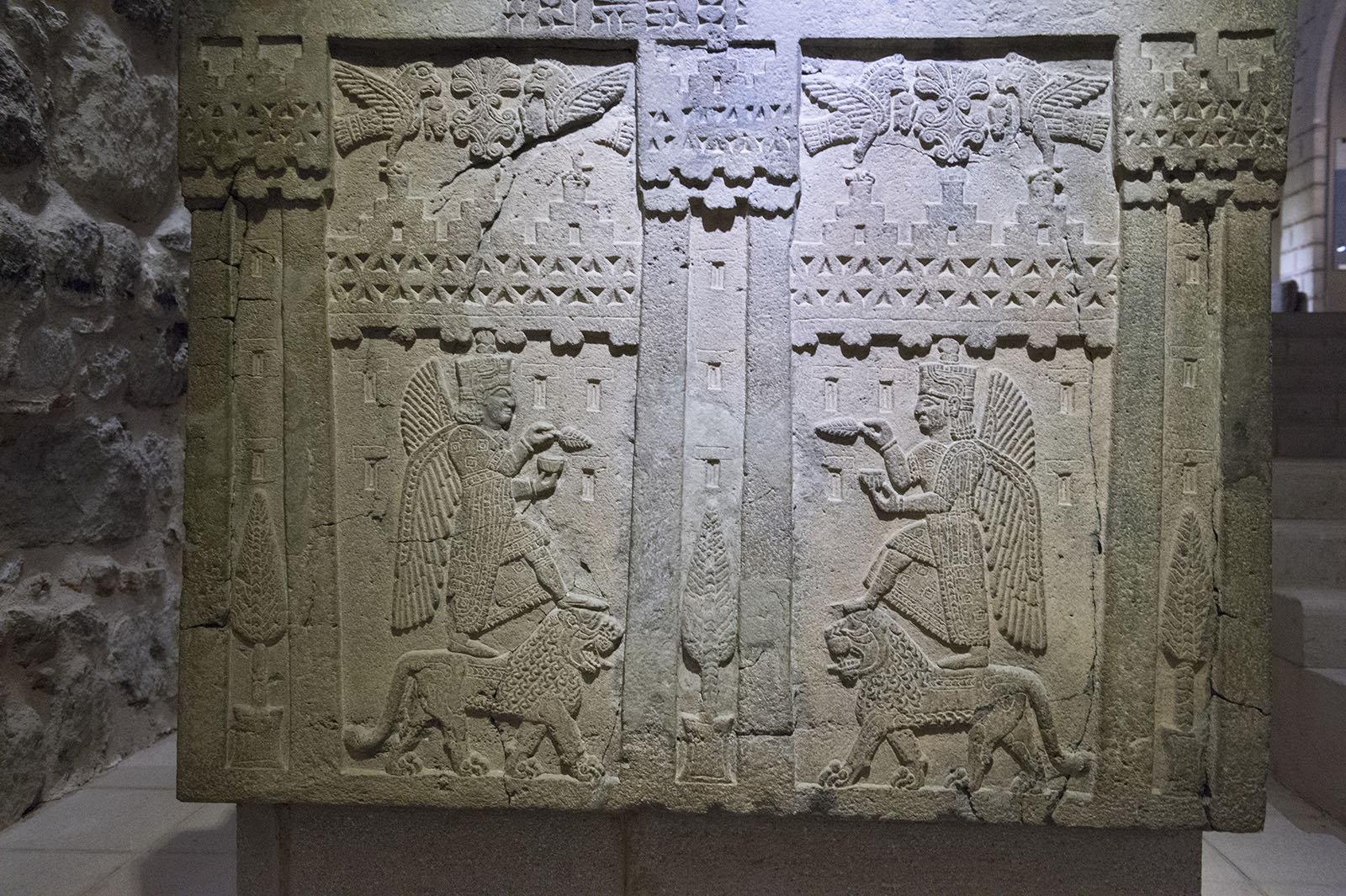|
Grace H. Knapp
Grace H. Knapp (21 November 1870 – 14 March 1953) was an American Christian missionary and teacher who served in the Ottoman Empire. During her time as a missionary, Knapp was a Witnesses and testimonies of the Armenian genocide, witness to the Armenian genocide. During the Armenian genocide, Knapp was stationed in Van and eventually described the events in the region in two published books describing her experiences. The first book, ''The Mission at Van in Turkey in War Time'', describes in detail the massacres of Armenians by Turkish soldiers during the Defense of Van (1915), Van Resistance. Her second book, ''The Tragedy of Bitlis'', relates the narratives of two nurses who witnessed massacres of Armenians in Bitlis. Her recounts of Bitlis are one of the few written accounts of massacres in that area. Early life Grace Highley Knapp was born on 21 November 1870 to missionary parents in Bitlis, Ottoman Empire. Her father, Reverend George Cushing Knapp, was a dedicated missi ... [...More Info...] [...Related Items...] OR: [Wikipedia] [Google] [Baidu] |
Bitlis
Bitlis ( hy, Բաղեշ '; ku, Bidlîs; ota, بتليس) is a city in southeastern Turkey and the capital of Bitlis Province. The city is located at an elevation of 1,545 metres, 15 km from Lake Van, in the steep-sided valley of the Bitlis River, a tributary of the Tigris. The local economy is mainly based on agricultural products which include fruits, grain and tobacco. Industry is fairly limited, and deals mainly with leatherworking, manufacture of tobacco products as well as weaving and dyeing of coarse cloth. Bitlis is connected to other urban centres by road, including Tatvan on Lake Van, 25 km to the northeast, and the cities of Muş (Mush), 100 km northwest, and Diyarbakır, 200 km to the west. The climate of Bitlis can be harsh, with long winters and heavy snowfalls. Summers are hot, and often humid. Since the local elections of March 2019, the Mayor of Bitlis is Nesrullah Tanğlay. History Ancient and medieval The origin of the name Bitlis is not ... [...More Info...] [...Related Items...] OR: [Wikipedia] [Google] [Baidu] |
Varagavank
Varagavank ( hy, Վարագավանք, "Monastery of Varag"; tr, Yedi Kilise, "Seven Churches") was an Armenian monastery on the slopes of Mount Erek, southeast of the city of Van, in eastern Turkey. The monastery was founded in the early 11th century by Senekerim-Hovhannes Artsruni, the Armenian King of Vaspurakan, on a preexisting religious site. Initially serving as the necropolis of the Artsruni kings, it eventually became the seat of the archbishop of the Armenian Church in Van. The monastery has been described as one of the great monastic centers of the Armenian church by Ara Sarafian and the richest and most celebrated monastery of the Lake Van area by Robert H. Hewsen. During the Armenian genocide, in April–May 1915, the Turkish army attacked, burned, and destroyed much of the monastery. More of it was destroyed in the 1960s, although some sections are still extant. History Origins According to tradition, in the late third century, Saint Hripsime hid the ... [...More Info...] [...Related Items...] OR: [Wikipedia] [Google] [Baidu] |
Varagavank View Bachmann 1913
Varagavank ( hy, Վարագավանք, "Monastery of Varag"; tr, Yedi Kilise, "Seven Churches") was an Armenian monastery on the slopes of Mount Erek, southeast of the city of Van, in eastern Turkey. The monastery was founded in the early 11th century by Senekerim-Hovhannes Artsruni, the Armenian King of Vaspurakan, on a preexisting religious site. Initially serving as the necropolis of the Artsruni kings, it eventually became the seat of the archbishop of the Armenian Church in Van. The monastery has been described as one of the great monastic centers of the Armenian church by Ara Sarafian and the richest and most celebrated monastery of the Lake Van area by Robert H. Hewsen. During the Armenian genocide, in April–May 1915, the Turkish army attacked, burned, and destroyed much of the monastery. More of it was destroyed in the 1960s, although some sections are still extant. History Origins According to tradition, in the late third century, Saint Hripsime hid the remn ... [...More Info...] [...Related Items...] OR: [Wikipedia] [Google] [Baidu] |
Erciş
Erciş (; ku, Erdiş; hy, Ականց, Akants, historically , ''Arjesh'') is a town and district located in the Van Province, Turkey on Lake Van. History of Artchesh During Classical Antiquity, the town was known as Arsissa, and Archesh (Arčeš) in Armenian and Arjish in Arabic. The Byzantines knew it as Arzes (Ἂρζες or Ἀρζές) and the 10th-century emperor Constantine VII Porphyrogennetos wrote in his '' De administrando imperio'' (Chapter XLIV) that it was under the rule of the Kaysite emirate of Manzikert. This small district served as the capital city of a number of ruling states. It was the main center of the province of Turuberan as part of the ancient Kingdom of Armenia. The city changed hands on several occasions between the Arabs and the Byzantines, in the early Middle Ages. From the mid 1020s onwards Archesh was governed by the Byzantines. In 1054, it was captured and sacked by the Seljuk Turks commanded by Tuğrul after an eight-day siege. It was for ... [...More Info...] [...Related Items...] OR: [Wikipedia] [Google] [Baidu] |
City Of Van Neighborhoods 1915
A city is a human settlement of notable size.Goodall, B. (1987) ''The Penguin Dictionary of Human Geography''. London: Penguin.Kuper, A. and Kuper, J., eds (1996) ''The Social Science Encyclopedia''. 2nd edition. London: Routledge. It can be defined as a permanent and densely settled place with administratively defined boundaries whose members work primarily on non-agricultural tasks. Cities generally have extensive systems for housing, transportation, sanitation, utilities, land use, production of goods, and communication. Their density facilitates interaction between people, government organisations and businesses, sometimes benefiting different parties in the process, such as improving efficiency of goods and service distribution. Historically, city-dwellers have been a small proportion of humanity overall, but following two centuries of unprecedented and rapid urbanization, more than half of the world population now lives in cities, which has had profound consequences for g ... [...More Info...] [...Related Items...] OR: [Wikipedia] [Google] [Baidu] |
Elizabeth Ussher
Elizabeth Freeman Barrows Ussher (20 October 1873 – 14 July 1915) was a Christian missionary and a witness to the Armenian genocide. Barrows described the atrocities against the Armenians as "systematic and wholesale massacre." Much of her life is described in the 1916 publication by her father John Otis Barrows, who described her as a "martyr of the Great War".John Otis BarrowIn the land of Ararat, a sketch of the life of Mrs. Elizabeth Freeman Barrows Ussher, missionary to Turkey and a martyr of the great war.PDF file, direct download. She was the wife of missionary physician Clarence Ussher. Life and work Elizabeth Freeman Barrows was born in Kayseri, Ottoman Empire on 20 October 1873 to Christian missionary parents. Due to her brother's poor health condition, when Barrows was two years old she and her family moved to Manisa in the hope that a change of environment would be helpful for the child. Once in Manisa, the Barrows family remained with other missionaries alre ... [...More Info...] [...Related Items...] OR: [Wikipedia] [Google] [Baidu] |
Irregular Military
Irregular military is any non-standard military component that is distinct from a country's national armed forces. Being defined by exclusion, there is significant variance in what comes under the term. It can refer to the type of military organization, or to the type of tactics used. An irregular military organization is one which is not part of the regular army organization. Without standard military unit organization, various more general names are often used; such organizations may be called a ''troop'', ''group'', ''unit'', ''column'', ''band'', or ''force''. Irregulars are soldiers or warriors that are members of these organizations, or are members of special military units that employ irregular military tactics. This also applies to irregular infantry and irregular cavalry units. Irregular warfare is warfare employing the tactics commonly used by irregular military organizations. This involves avoiding large-scale combat, and focusing on small, stealthy, hit-and-run ... [...More Info...] [...Related Items...] OR: [Wikipedia] [Google] [Baidu] |
Enver Pasha
İsmail Enver, better known as Enver Pasha ( ota, اسماعیل انور پاشا; tr, İsmail Enver Paşa; 22 November 1881 – 4 August 1922) was an Ottoman military officer, revolutionary, and convicted war criminal who formed one-third of the dictatorial triumvirate known as the "Three Pashas" (along with Talaat Pasha and Cemal Pasha) in the Ottoman Empire. Enver was a member of the Committee of Union and Progress (CUP), a Young Turk organization that agitated against Abdul Hamid II's absolute rule. He was a leader of the 1908 Young Turk Revolution which reestablished the Constitution and parliamentary democracy in the Ottoman Empire, and along with Ahmed Niyazi was hailed as "hero of the revolution". However multiple crises in the Empire including the 31 March Incident, the Balkan Wars, and the power struggle with the Freedom and Accord Party made Enver and the Unionists disillusioned of political pluralism. After the 1913 Ottoman coup d’état that brought t ... [...More Info...] [...Related Items...] OR: [Wikipedia] [Google] [Baidu] |







